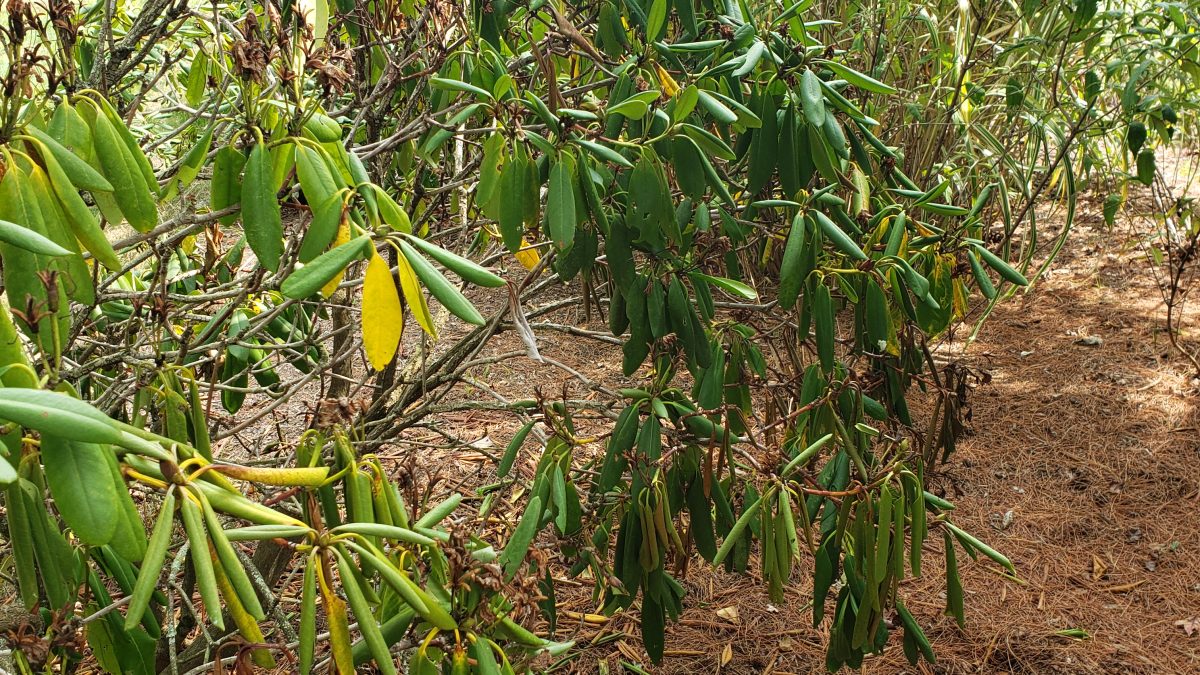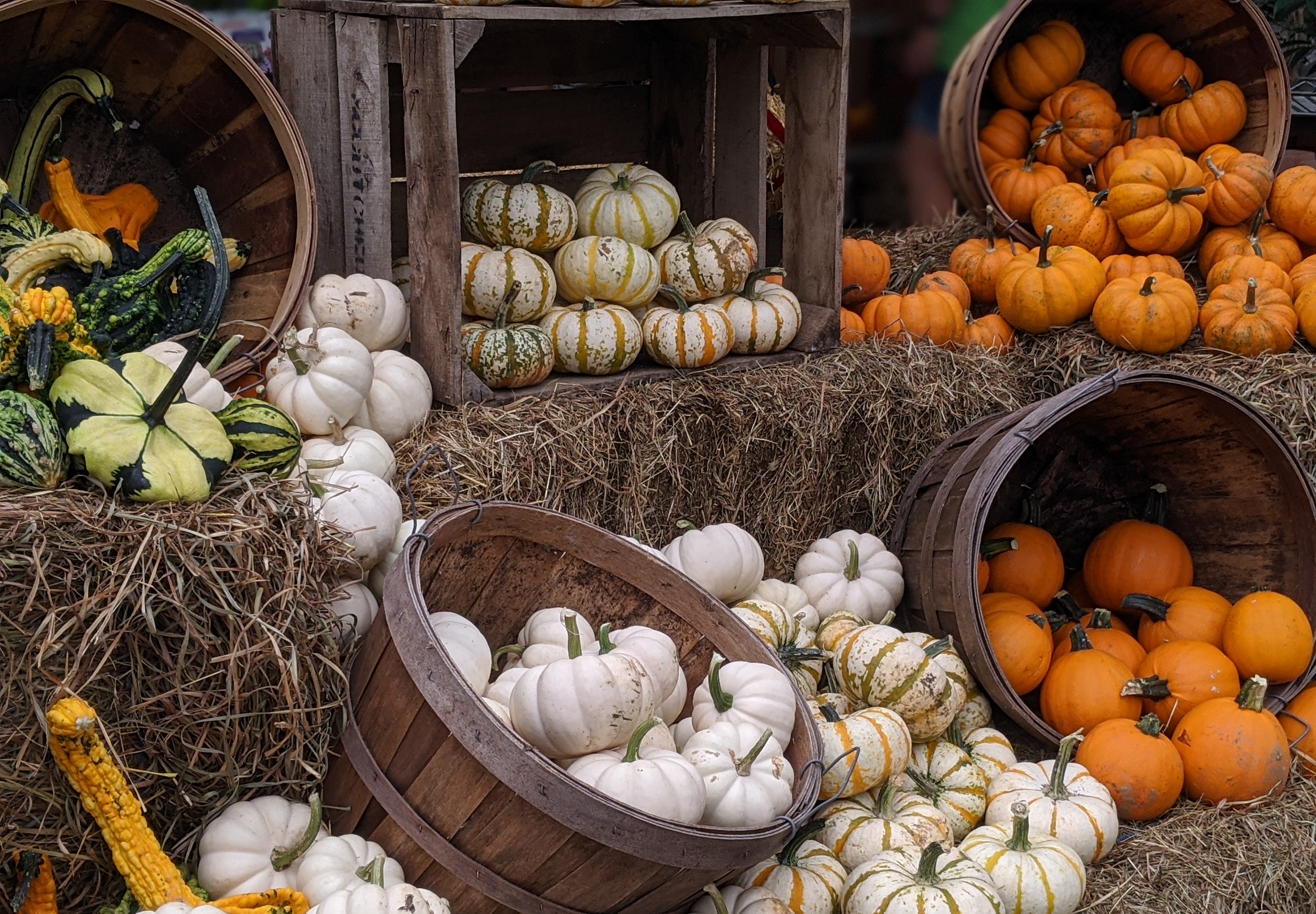
Fall Planting
September 10, 2020
Burnett’s Grown Vegetables
October 15, 2020As we head into fall we are continuing to have significant drought conditions in our area. Typically early fall wet weather sets plants up to go to sleep happy for the winter, but this year in order to ensure healthy plants in spring, they will require some attention.
All of your shrubs, trees, and perennials are at risk of damage from the extended drought conditions and should be examined for signs of distress, paying closest attention to broadleaf evergreens such as rhododendrons, boxwoods, holly, leucothoe, etc. and anything newly planted this season.
Signs of distress you may see include leaf curling, yellowing of tips of leaves, early dropping of leaves, scorched leaf tips, and wilting. The photos included here are some examples of drought distress in some local plants, all of the photos are of plants that are part of a well-established garden and have been in the ground for at least five seasons.
The most important thing to help these plants get back to health and get ready for the winter are to get them sufficiently hydrated. In order to get the plants back on track you need to achieve 4 inches of penetration. Simply setting up a hose or using a full strength hose is not going to achieve the deep saturation you need. The ideal way to successfully water these plants is to set a hose to trickle for at least 12 hours at the base of the plant. After this extended period of time you should stick your finger into the soil to be sure there is good infiltration, if it is not moist at least 4 inches down continue the process until it is.
Though it requires some effort and time you will be rewarded with a beautiful landscape in spring!
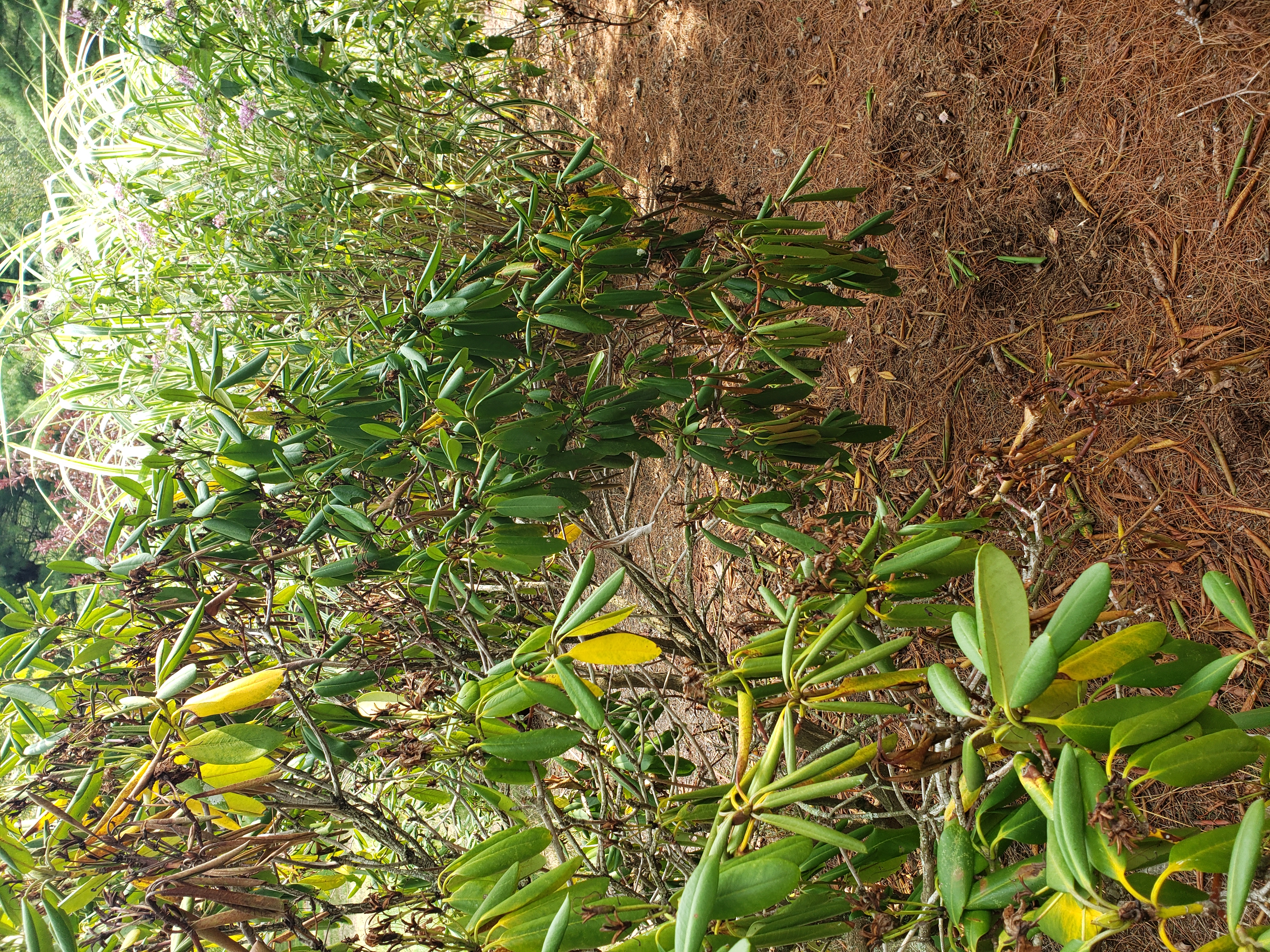
Rhododendron under severe drought stress. Notice rolled/ curling leaves if broadleaf evergreens go into winter dry like this they will likely not survive.
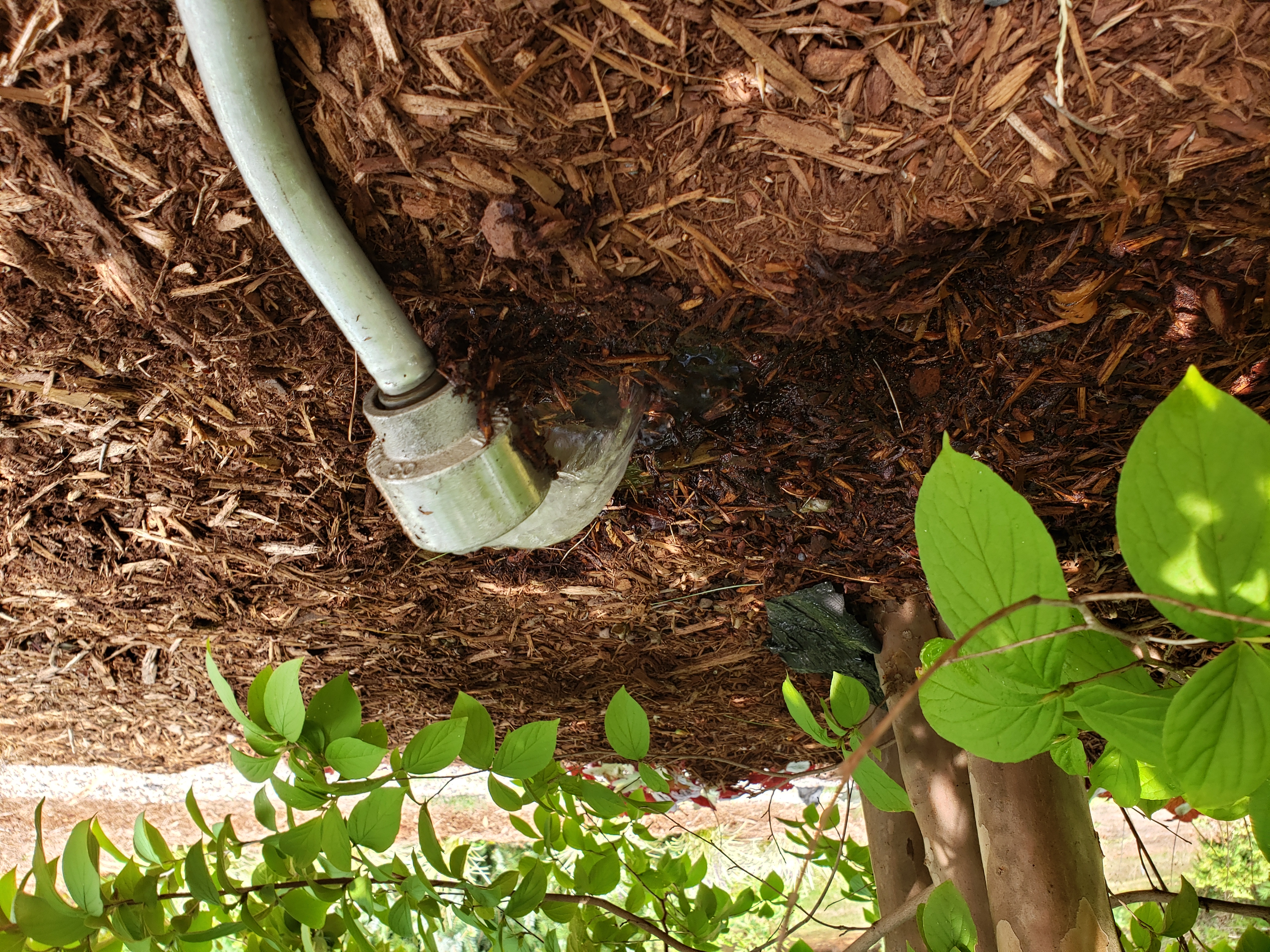
Years 1 -3 the shrubs and trees will need significantly more monitoring and watering and should not be allowed to dry out more than 2" below soil surface.
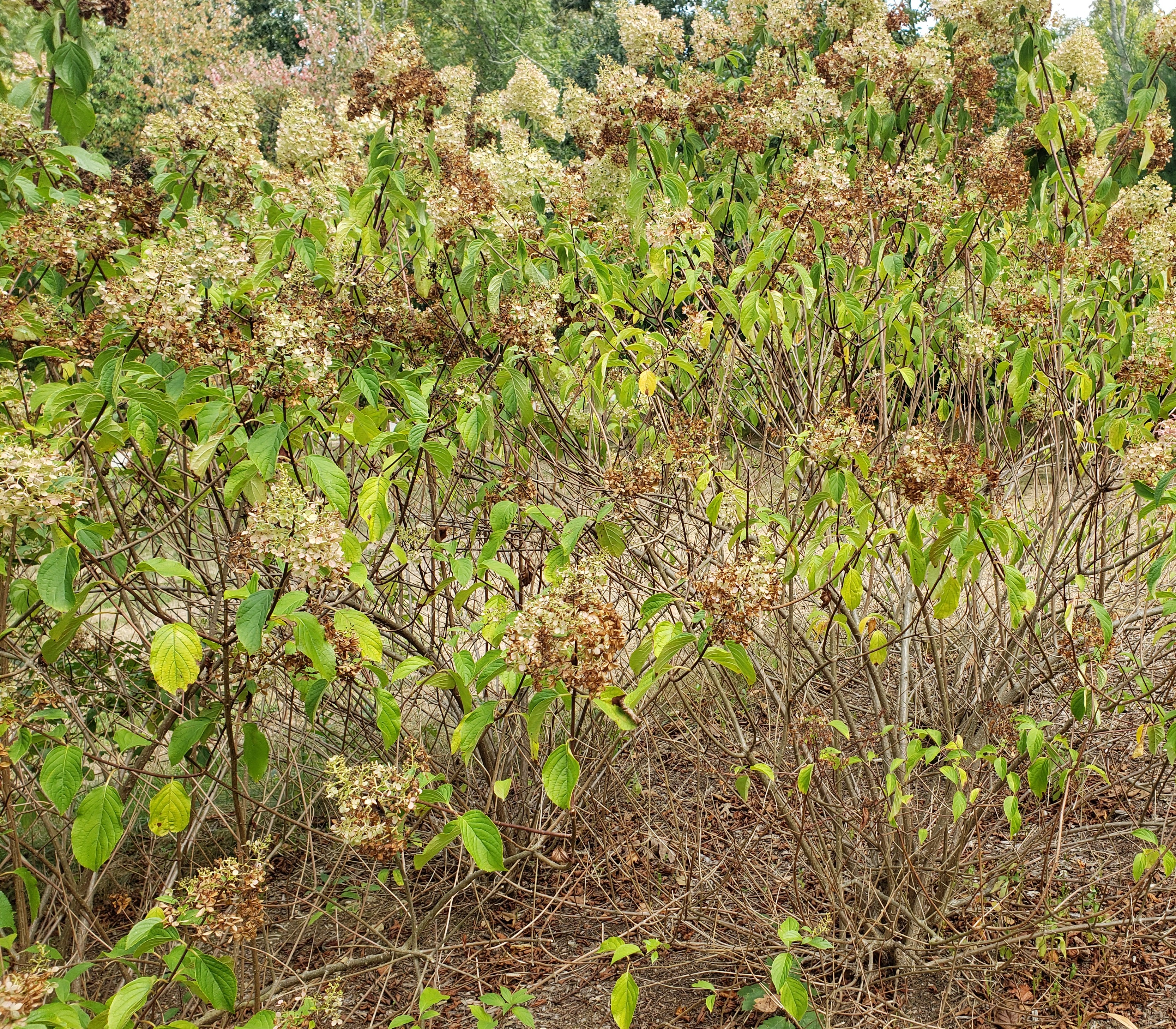
Severe drought stress. Flowers burned, foliage had dropped.

Hydrangea Limelight first stage of drought. Inner leaves yellowing and shedding prematurely. Leaves near ends of branches flagging.

